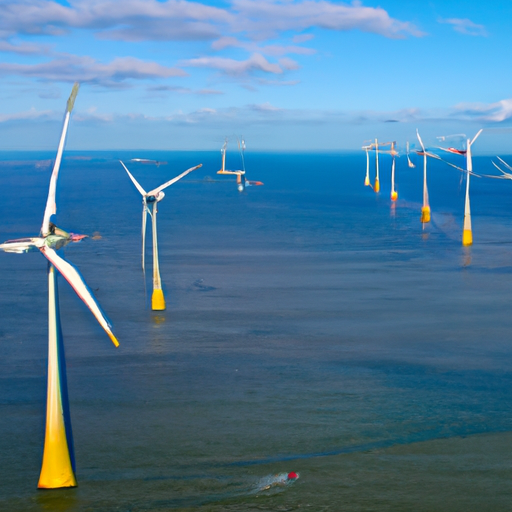Maine, the famous state of lobsters and lighthouses, is breaking new ground in the offshore wind industry. Despite facing obstacles such as deep waters that are not suitable for conventional fixed-platform turbine construction and competition from tourism and maritime industries, the state is pushing forward with innovative solutions.
Introducing Floating Offshore Wind Turbines
Instead of fighting against these challenges, Maine is embracing a new approach: floating offshore wind turbines. Floating turbines are innovative solutions anchored to the sea bed, representing an ingenious feat of engineering that contends with strong waves and unpredictable weather. Given the steep costs and engineering complexity, achieving the right balance has proven difficult.
Revolutionizing Wind Energy through Collaborations
The rising offshore wind industry in Maine is a result of the funding and support received from the US Department of Energy and other programs. Notably, one important project is a partnership with the University of Maine.
Maine’s Unique Advantages
Even though Maine is a largely rural and low populated state, it boasts some of the world’s best offshore wind resources. This potential coupled with the state’s heavy reliance on home heating oil makes Maine a suitable place for investing in renewable energy options such as offshore wind turbines.
Maine’s Transition to Renewable Energy Sources
Maine’s recent move towards green energy sources has also shifted the focus on integrating green hydrogen into the mix. State officials, led by Governor Janet Mills, have shown a keen interest in using this renewable energy source as a means to supplement the existing transmission system, drawn from the experiences of offshore wind farms in Scotland.
Partnership with Mitsubishi
Mitsubishi’s involvement in the Maine project has been significant, as it acquired the newly named firm New England Aqua Ventus through a partnership with Mitsubishi Renewables Diamond Offshore Wind subsidiary and RWE Renewables.
Exploring the Potential of the Aqua Ventus Project
The Aqua Ventus project, which almost fell through under the previous administration, was first launched in 2011. The aim of this ground-breaking project was to develop a new concrete hull as a more feasible alternative for steel platforms in floating offshore wind farm construction. This new hull design utilizes a globally deployable, cost-effective, and corrosion-resistant approach that utilizes pre-cast bridge building techniques, potentially reducing overall maintenance and operation costs.
Progress and Future Plans for the Maine Offshore Wind Industry
So far, the promise of economical, globally adaptable floating wind turbines has attracted sizable funding, with $40 million from the Energy Department and a $100 million investment from RWE Renewables and Mitsubishi. With plans to launch an 11 megawatt VolturnUS turbine under way and ambitions to secure a lease for an offshore site in federal waters, the future looks bright for Maine’s offshore wind industry.
Overcoming Challenges and Moving Ahead
While the offshore wind industry in the US faces numerous challenges, Maine is demonstrating that it is possible to overcome these hurdles through innovative thinking and collaborative partnerships. Despite the current lackluster performance of the US offshore wind industry and ongoing opposition, states like Maine are forging ahead with renewable energy projects under the supportive Biden administration. The story of Maine’s offshore wind industry is one of resilience, innovation, and promise for a cleaner, greener future.
